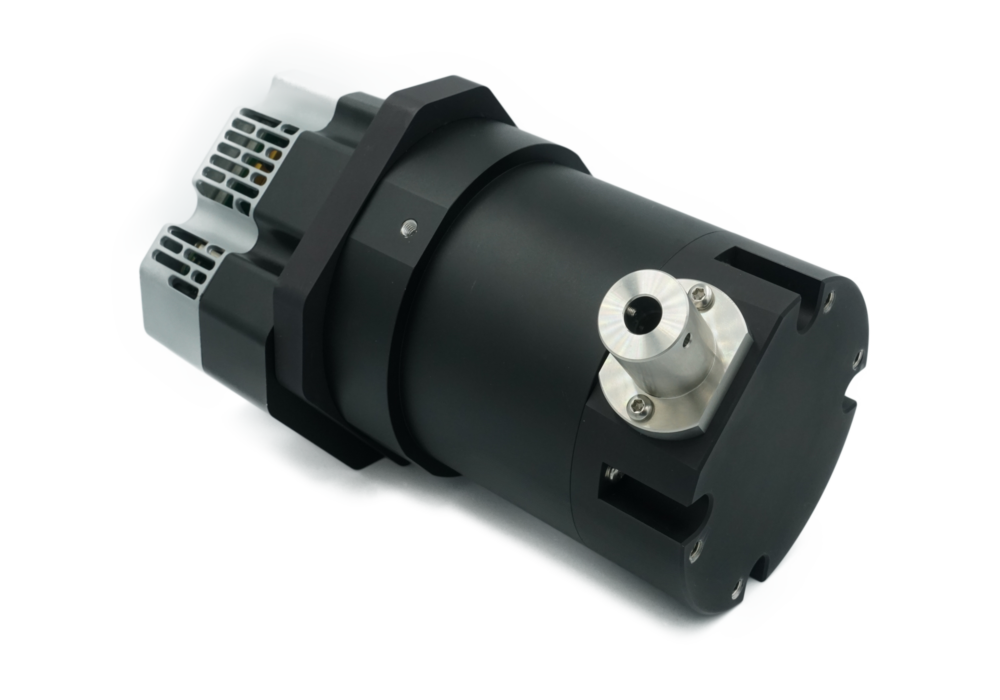Raman spectrometers
for system integration
Choosing the right Raman spectrometer for your application
The best choice of a Raman spectrometer naturally depends on your specific application. Basic technical parameters to consider are laser wavelength, spectral range, sensitivity, and resolution. The choice of laser wavelength is often determined by finding the right compromise between the Raman scattering signal and the fluorescence signal from your sample. In many cases, a laser wavelength of 785 nm is a good starting point. The spectral range is determined by the specific samples you are going to analyze. Most commonly, only the Stokes shift is measured, meaning that the wavenumber shifts are positive and the wavelength range is longer than the laser wavelength.
If the Raman signals are very weak, the spectrometer needs to be highly sensitive. This can be achieved by choosing a spectrometer with a high numerical aperture and/or a tall entrance slit. Furthermore, using a deeply cooled detector can enable long integration times, which also provides high sensitivity. The resolution of a spectrometer determines how well your instrument will be able to resolve closely spaced peaks. High resolution often means lower sensitivity, so it is generally advisable to choose a resolution just slightly larger than the wavenumber separation between the two closest spaced peaks in your anticipated spectra.
Besides the technical requirements, you should also consider how the instrument is going to be used. If the instrument is a handheld unit, it is important to consider size, weight, and possibly power consumption for prolonged battery operation. In that case, cooling should generally be avoided as it increases both weight and power consumption. If the instrument is a tabletop unit, the constraints on size, weight, and power consumption are not as stringent.
Finally, the Raman spectrometer cost is naturally an important factor. Factors that drive the Raman spectrometer price upwards include cooled detectors and high numerical aperture optics. As a general rule of thumb, the smaller the spectrometer, the lower the Raman spectrometer cost.
Considerations when choosing a spectrometer:

Our Raman spectrometers
Overview of our Raman spectrometers by excitation laser wavelength, grouped into high-sensitivity and compact units.
| Excitation | High Throughput | Compact | |
|---|---|---|---|
| 532 nm | Range (cm-1) Resolution (cm-1) | EAGLE Raman HR 532 0 - 5136 7 | FREEDOM HR-VIS / C-VIS "0" - 6700 14/11 |
| 785 nm | Range (cm-1) Resolution (cm-1) Range (cm-1) Resolution (cm-1) | EAGLE Raman HR 785 0 - 3480 5 EAGLE RAMAN-S 200 - 3650 6 | FREEDOM HR-VIS-NIR / C-VIS-NIR "0" - 3650 10/7 |
| 830 nm | Range (cm-1) Resolution (cm-1) | EAGLE RAMAN-S 0 - 2960 6 | FREEDOM HR-VIS-NIR / C-VIS-NIR "0" - 2950 9/6 |
Ibsen as your Raman spectrometer manufacturer
At Ibsen, we understand that volume manufacturing of application-specific Raman spectrometers is a completely different task than building a single scientific instrument. We are an ISO 9001 and 13485 certified manufacturer with decades of experience in volume manufacturing of OEM spectrometers.
Our emphasis is on the high and consistent quality of our products, ensured through our proven, robust designs and 100% outgoing inspection. Especially for Raman spectrometers, our low unit-to-unit variation can help you achieve model transferability between your instruments.
Our spectrometer designs have undergone environmental qualification to ensure proper operation within specified thermal, humidity, vibrational, and drop test conditions.
We have established long-term relationships with a range of qualified sub-suppliers, ensuring you a stable supply chain. Furthermore, we offer our OEM customers flexible supply options, typically based on frame order contracts or Kanban agreements.
All in all, Ibsen Photonics is a well-established spectrometer supplier that enables you to focus on your core business.
Advantages working with Ibsen:
Raman spectrometer FAQ
More resources
Want to know more?
For further information see below.

